14. Sweet Country
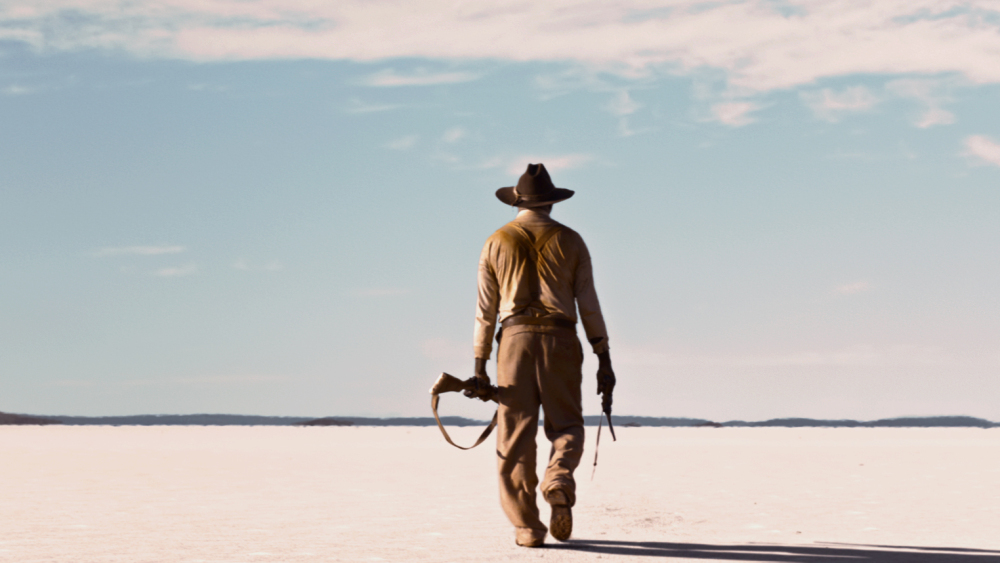
Aboriginal filmmaker Warwick Thornton (Samson and Delilah [2009]) continues his run of outstanding Australian cinema with a much needed, and all too rare indigenous perspective, with his prize-winning “counter western”, Sweet Country.
Having taken home the Special Jury Prize at Venice as well as the Platform Prize at TIFF 2017, this outstanding, heart-rending drama is inspired by actual events that unfolded in the outback of Australia’s Northern Territory in the 1920s. Here a grievous miscarriage of justice exposed the deep-seated racism underlying Australia’s foundational myth.
Hamilton Morris is magnetic as Sam Kelly, a middle-aged Aboriginal farmer who’s self-defence murder of a white man gives Sweet Country a story seared with anger, pain, and sorrow. Buttressed by Thornton’s own generous and gorgeous cinematography, which calls to mind the mystery and almost supernatural presence of other great artistic Aussie masterworks like Nicolas Roeg’s Walkabout (1971) and Peter Weir’s Picnic at Hanging Rock (1975) –– particularly given some of Sweet Country’s inspired and spooky editing experiments. Don’t miss it.
13. The Ritual
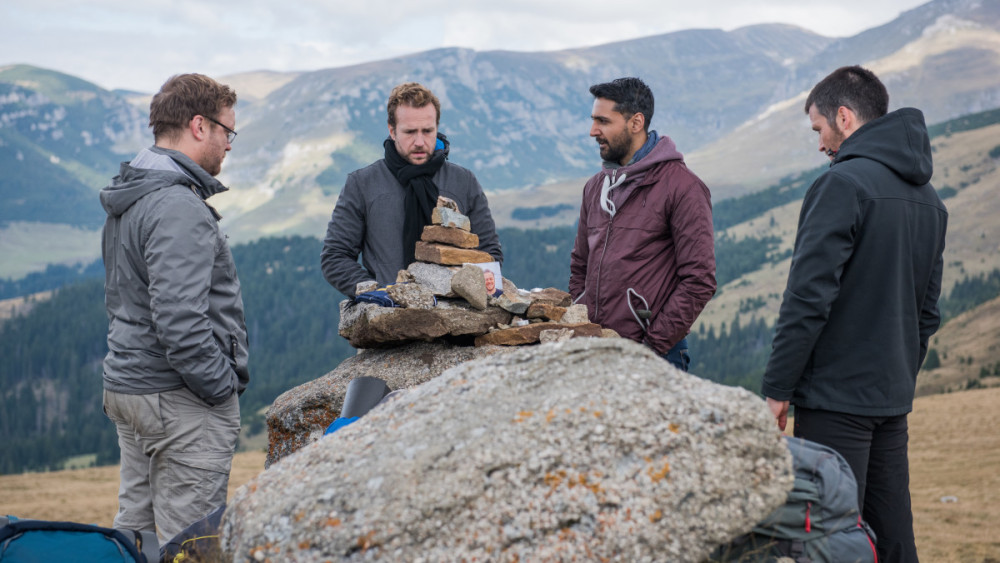
Based off of Adam Nevill’s frightening 2011 novel of the same name, director David Bruckner’s The Ritual is a sinister and stylish doom-addled psychological fright fest, that also succeeds as a smart creature feature, and a compelling study of confused masculinity as young men try to come to terms with grief and guilt.
Leading the impressive ensemble is Rafe Spall as Luke, one of four college pals who’ve reunited several months after the tragic death of their friend, Robert (Paul Reid). The group have decided to take Robert’s ashes with them on a trek through the Scandinavian wilderness, not just as an act of catharsis and tribute, but also for their own healing. But soon the men find themselves in a deep, dark forest where an ancient evil known as a Jötunn is following them.
Joe Barton’s screenplay is largely faithful to Nevill’s stylish prose, though he does eschew a bleakly comical side-story about a Scandinavian death metal band –– if the film has a weakness it might just be that it lacks any comic relief from all the mental anguish and emotional strain –– and the effectively creepy sound design, inspired production design, and brilliant creature design (kudos to Keith Thompson for his creature conception) all add up to one of the year’s most cult-worthy horror films.
The Ritual did well on the fantastic film festival circuit last year, so well that Netflix eagerly snatched it up so that the rest of us could experience this nightmare-fueled fever dream in the relative safety of our own livingrooms. That said, if you watch The Ritual this summer, you might be cancelling any camping trip plans you’ve made, and that may just be for the best.
12. Unsane
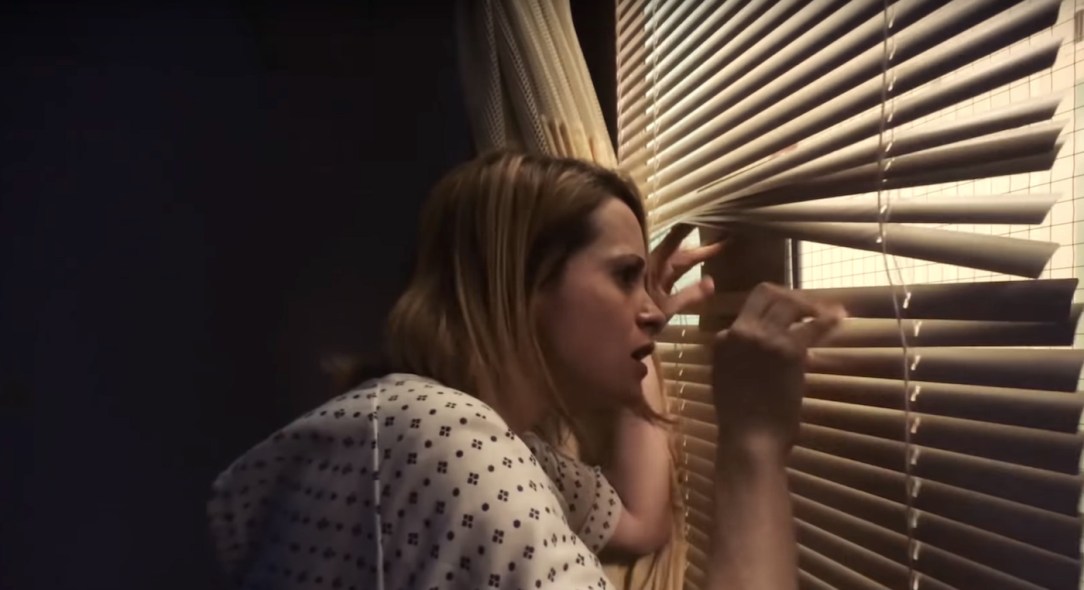
Unsane is Steven Soderbergh’s first true foray into horror and it moves nimbly through some rather well-trodden territory. The familiar premise, itself an echo of Robert Wiene’s 1920 classic The Cabinet of Dr. Caligari, is that of an innocent confined against their will inside of an icy institution, and who tragically is met with condescension and dismissal when trying to prove their sanity.
Starring a dazzling Claire Foy as Sawyer Valentini, a thirtysomething urban professional who has had to go to great lengths to avoid her persistent stalker, David Strine (a creepy Joshua Leonard). Sawyer had hoped that, having relocated from Boston to a more tranquil and mundane Pennsylvania would vanquish Strine from her thoughts and improve her mental health. Oh, but if it were true! Sawyer seems to see Strine everywhere, and it’s getting in the way of her life.
In an attempt to gain better focus of her fears, Sawyer sees a counsellor at the Highland Creek Behavioural Center, but before you can say “a better bottom line for the insurance companies” Sawyer is being incarcerated over some suggestive (and innocuous) comments. Things go from bad to worse as the mixed ward Sawyer is stuck in contains the verbally abusive Violet (Juno Temple), a secretive yeet potential ally in Nate (Jay Pharoah), and a few Nurse Ratched-level healthcare “professionals”, and worst of all, a suspicious orderly named George Shaw, who is a goddamn deadringer for Strine.
Soderbergh, who not only directed but shot and edited the film from a script by Jonathan Bernstein and James Greer, is at his experimental best. Unsane, amazingly, was shot entirely on the iPhone 7 Plus, and with the stunning 4K transfer, it’s stunning to behold (particularly a nighttime chase through the woods that will send your heart racing). Sure, the broad strokes in Unsane are recognizable, but when have they ever been this fresh and this frightening? Soderbergh has rarely been in finer form.
11. Damsel
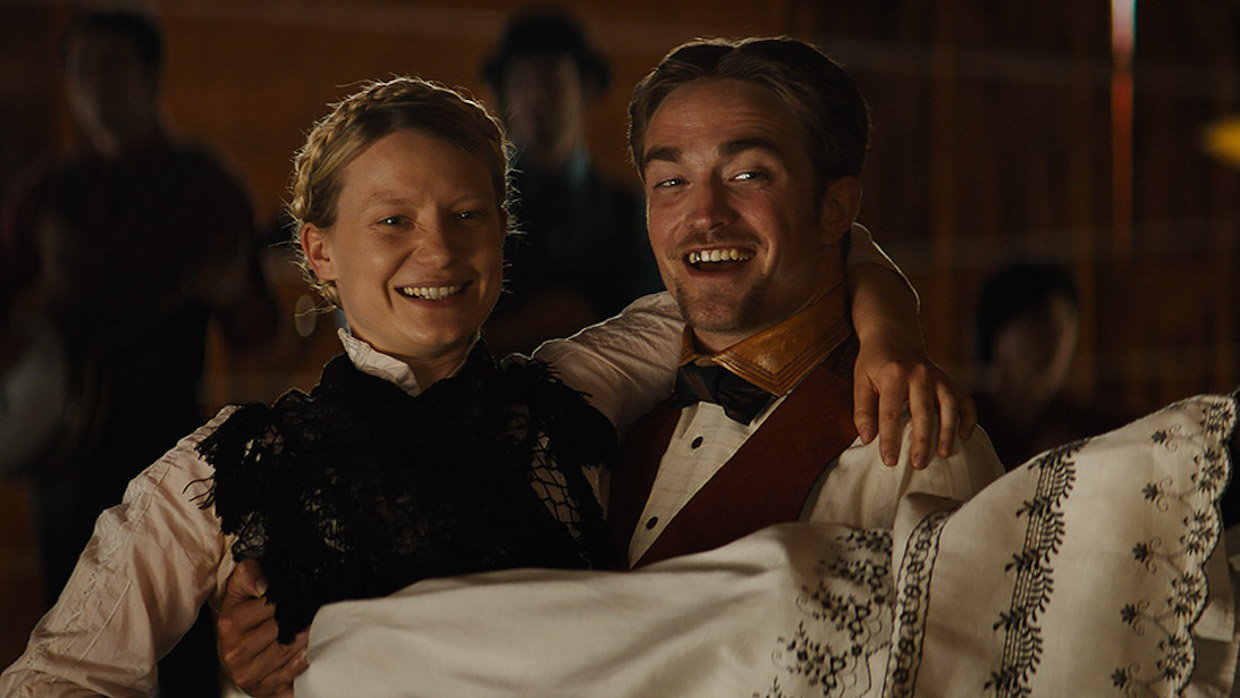
The writer-director duo of David and Nathan Zellner follow up 2014’s impressive Kumiko, the Treasure Hunter with the often knee-slapping and consistently subversive revisionist Western, Damsel.
Samuel Alabaster (Robert Pattinson) appears, an articulate dandy of a fella, in unfamiliar territory he is accompanied by a miniature horse named Butterscotch, and shares his intent on rescuing his beloved Penelope (Mia Wasikowska) from the vile kidnappers who snatched her away. Or so Samuel frames it when talking to Parson Henry (David Zellner), a wayward man of the cloth hired on to officiate their wedding vows, if would-be gunslinger Samuel can indeed rescue his damsel, and if indeed Penelope is a prisoner at all.
The Zellner brothers brilliantly blur the fine lines between hero, villain, damsel and deerstalker in this odd odyssey that occasionally echoes both Mel Brooks’s Blazing Saddles (1974) and John Maclean’s Slow West (2015), with just a splash of Nicholas Ray’s Johnny Guitar(1954) for good measure, in a film that effortlessly trots between uproarious comedy and unsettling tragedy with a slick straphanger’s gait.
10. Zama
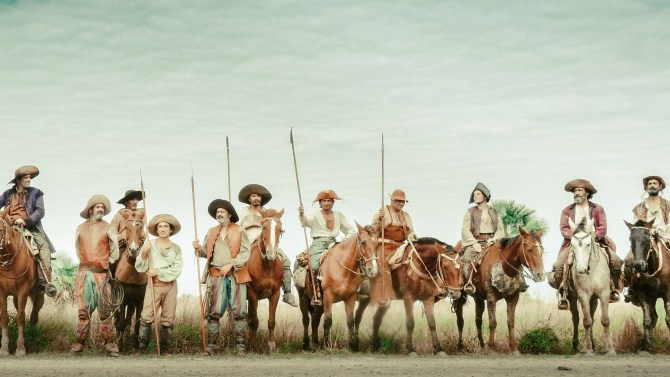
Fans of Argentine auteur Lucrecia Martel’s The Headless Woman (2008) have had an agonizingly long wait for her follow-up film, Zama, and the wait, we’re pleased to announce, was well worth it. Adapted from Antonio di Benedetto’s 1956 novel, Zama is historical fiction with a suitably ambitious scale that, in Martel’s hands, assumes an expectedly enigmatic form from one of this century’s most audacious and original filmmakers.
Unfolding in the late-18th-century, in an isolated Paraguay colony, Zama follows the twisting fate of the titular Spanish magistrate, Don Diego de Zama (Daniel Giménez Cacho), who waits in vain for the royal transfer that will reunite him with his far-off family.
Zama dazzles in part due to the oneiric lensing of cinematographer Rui Poças (we’re still reeling from his work in 2016’s The Ornithologist), which lends itself so well to Martel’s elliptical, and teasingly elusive style of storytelling. Zama is a sensorial experience, it finds some solidarity with the Western genre, and Martel even displays, astonishingly, an admiration for horror films (Zama ends in a full on fever-dream nightmare fashion), in what is one of the most beguiling and bold films you’re likely to see all year. A tour de force, full stop.
9. A Quiet Place
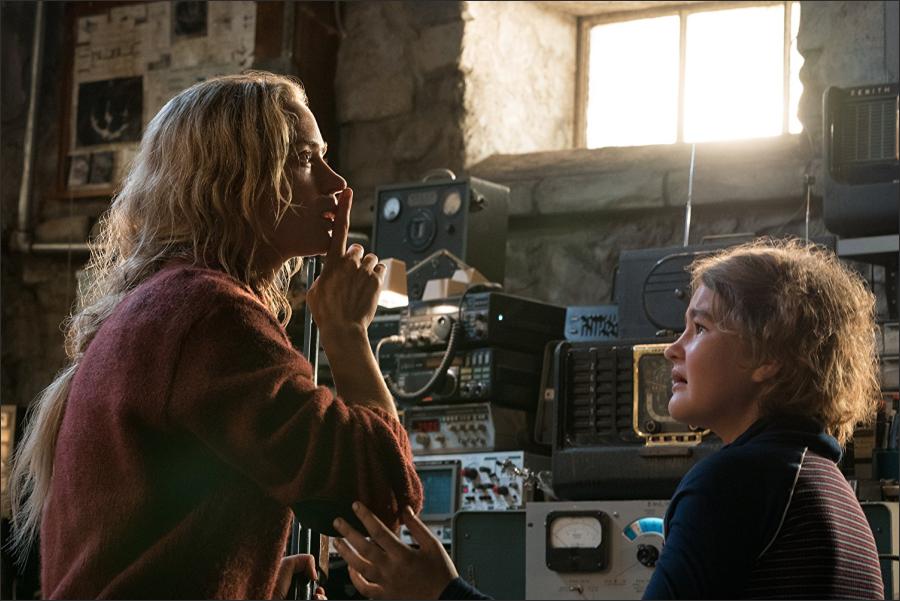
A menacing horror movie set in a pitilessly silent world, director John Krasinski’s latest film A Quiet Place is also a fine sample of smart sci-fi, solidly backed by arresting human drama.
Written by the genre specialists/screenwriting duo of Scott Beck and Bryan Woods (Nightlight [2015]), Krasinski, who further developed the screenplay with them, also co-stars along with brilliant actress and wife Emily Blunt. Unraveling in an eerie, post-apocalyptic world where childhood innocence, family life, and joy have been swept away by hard-to-fathom ferocity and intense fear.
While being economically sparing with the details, A Quiet Place is immediately open about its premise. In a not-too-distant future a race of mean, massive, unmanageable, multi-appendaged spider-like monsters have appeared. In this bleak tomorrow, the scant survivors have to adapt to a world of deliberate silences. Such are the Abbott family, Lee (Krasinski) and Evelyn (Blunt), who along with their three young children — sons Marcus (Noah Jupe) and Beau (Cade Woodward), and deaf daughter Regan (Millicent Simmonds) — have turned their remote farmhouse and environs into an efficacious survivalist ranch.
A Quiet Place will be forever remembered for its brilliant use of sound (see the next section of this list for more detail on this), but it would be folly to overlook the numerous and many clever and well-executed tableaus that Krasinski and Charlotte Bruus Christensen capture on camera, that help bring the dynamic sound design to brilliant, and nail-biting life. Genre fans, rejoice!
8. Black Panther
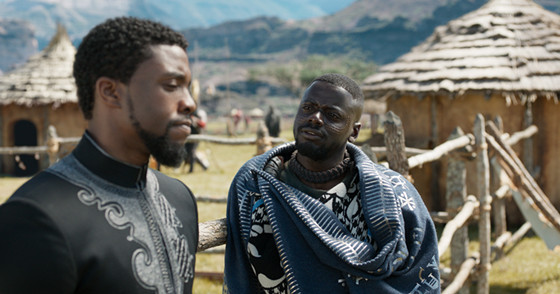
Chicago Sun-Times critic Richard Roeper excitedly called Ryan Coogler’s Marvel Studios debut “one of the best superhero movies of the century […] If you appreciate finely honed storytelling with a Shakespearean core; winning performances from an enormously talented ensemble; provocative premises touching on isolationism, revolution and cultures of oppression, and oh yeah, tons of whiz-bang action sequences and good humor – then you should see Black Panther.”
Largely set in the fictional (and eye-poppingly breathtaking) African nation of Wakanda, T’Challa, aka Black Panther (Chadwick Boseman), has returned to take his rightful place as king. With the arrival of a powerful new enemy, Erik “Killmonger” Stevens (Michael B. Jordan) –– easily amongst the most compelling villains in all the Marvel Universe –– these two adversaries are drawn into deadly conflict that will land not just Wakanda, but the entire planet, in peril.
Colorful, kinetic, and more thought-provoking than the last dozen superhero movies, Black Panther is a seriously relevant, and engaging blockbuster that brims with ideas worth debating. Oh, and the Kendrick Lamar OST is stunning, too. This is the best and most absorbing Marvel movie to date, period.